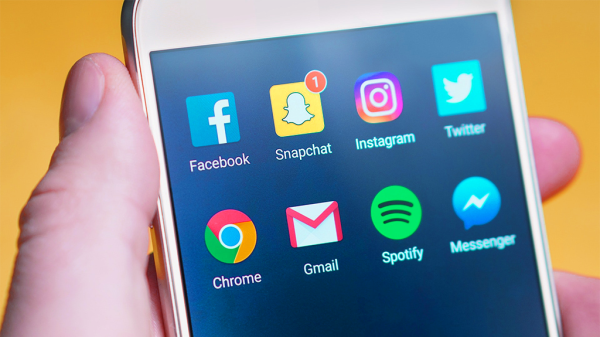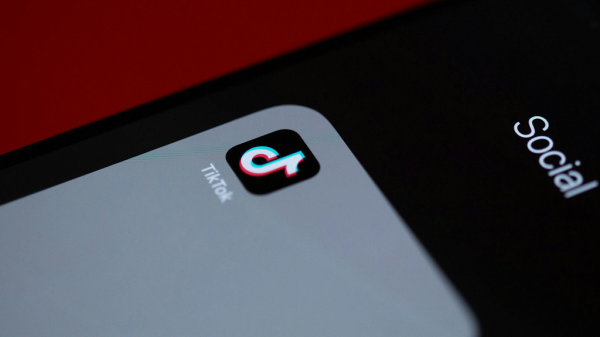
The future of business
The digital environment is shaping every industry across the globe, shaping how consumers connect with brands, comparison shop, communicate, save money, make purchases, and so on. Production and delivery methods have changed along with consumer behavior and our global resources are shifting as well.
You’ve read several of these studies here on AG, but for those you missed or those you have bookmarked to read later, this SAP presentation gives a quality bird’s eye view of the future of business:
99 facts from the presentation:
- Over 40% of the companies that were at the top of the Fortune 500 in 2000 were no longer there in 2010.
- By the end of 2013, there will be more mobile-connected devices than there are people on earth.
- Facebook has more than 1 Billion network users.
- By 2030, 5 billion people – nearly two thirds of global population – could be middle class.
- Typical mobile users check their phone 150 times per day.
- Only 7% of Gen Y works for a Fortune 500 company as startups dominate the workforce for this demographic.
- Millennials are 3 times as likely to follow brands over a family member on social networks.
- 90% of all internet traffic in 2017 will be video.
- The amount of data stored is doubling every 18 months.
- 1.2 billion people were still living on less than $1.25 a day in 2010, a decrease of 100 million since 2008.
- 12. 73% of people surveyed wouldn’t care if the brands they use disappeared from their life.
- The half-life of a piece of content shared on top social networks Twitter and Facebook is 3 hours. (Half-life is the amount of time it takes content to reach 50% of the clicks it will ever receive).
- The global rate of extreme poverty fell to 20.6 percent, less than half the 1990 rate of 43.1 percent.
- Globally, more people trust regular employees to tell the truth than CEOs (50% vs. 43%).
- Newspapers have lost $40 Billion in advertising revenue since 2000.
- The average number of sources of content consumed by a shopper in a purchase doubled from 2010 to 2011 going from 5 to 10 pieces of content consumed.
- Worldwide, more than 3 billion people are working, but nearly half work in farming, small household enterprises, or in casual or seasonal day labor.
- More than 70% of customers surveyed believe small businesses understand their customer better than large companies, know their business/product better than large companies, provide a more personal customer service experience than large companies and are more concerned about my needs than larger companies.”
- Gen Y will form 75% of the workforce by 2025 and are actively shaping corporate culture and expectations. Only 11% define having a lot of money as a definition of success.
- 29% of Millennials find love through Facebook while 33% are dumped via wall posts or text messages.
- It is 6 to 7 times more expensive to acquire new customers than it is to keep a current one.
- Content on the internet tripled between 2010 and 2013.
- Wearable devices have grown by 2x month over month since October 2012.
- Social media sharing has doubled between 2011 and 2013, with Snapchat taking a large share after only 1 year.
- It takes 12 positive experiences to make up for one unresolved negative experience.
- The world population has more than doubled over the past 50 years and it will exceed 9 billion people by the 2040s.
- The number of pieces of mail delivered by the US postal service dropped from 250 Million in 2006 to 50 Million in 2012.
- The percentage of companies new to the Fortune 1000 has grown from 35% (1973- 1983) to 45% (1984-1993) to 60% (1994-2003) to over 70% (2004-2013) in each of the last 4 decades.
- The amount of time parents spend with their children continues to go up in the US. Fathers have nearly tripled their time with children since 1965. Mothers’ time with children has also increased, and today’s mothers spend more time with their children than mothers did in the 1960s.
- Top 5 risks with the highest likelihood are: Income disparity, fiscal imbalances, greenhouse gas, water supply, and aging population.
- 884 Million people lack access to fresh water. By 2040, at least 3.5 billion people will run short of water.
- The population living in urban areas is projected to increase from 3.6 billion in 2011 to 6.3 billion 2050.
- On average, the world has become a little happier in the last 30 years. Health care, education and income have the biggest impact on life satisfaction.
- In 2010, Hans Vestberg, CEO of Ericsson, predicted that by 2020, 50 billion devices would be connected to the internet.
- 80% of the top Global Internet sites are US-based while 81% of the Global Internet population is non-US.
- US-based mobile phone operating systems maintain 88% share of all global mobile phone sales (up from 5% 6 years ago).
- Mobile traffic as a percent of internet traffic is growing 1.5x per year (now still only 15%).
- There are 1.5 Billion smartphone users vs. 5 Billion mobile users worldwide.
- Tablet growth is more rapid than smartphones. (3x iPhone growth)
- The next wave of computing is “wearables” (or “drivables”, “flyables”, “scannables”).
- The average subscription rate of mobile Internet access in developed countries as a whole rose to 56.6% in June 2012, up from just 23.1% in 2009.
- 80% of data used on mobile devices is received via WiFi connections to fixed networks.
- 60% of US consumers agree, “Technology has made us feel more connected” while 40% agree, “Technology has made us feel more isolated from each other.”
- The average US adult spends 141 minutes a day using mobile devices.
- The projected share of world population with smartphones in 2014 is 24%.
- January to June 2013, global demand for smartphones rose by 66% compared with the same period in the previous year, while the market for conventional mobile phones shrank by 25%.
- 85 percent – share of smartphones as a proportion of all mobile devices is also the highest in China.
- Smartphone adoption worldwide is creating more and more demand for mobile bandwidth, but it won’t be a mobile broadband-majority world until 2016.
- There will be a 50-fold aggregate growth in smartphone gigabyte traffic between 2011 and 2016, with China emerging with a 10% share of this market.
- A study by the UN found that nearly 200,000 text messages were sent every second in 2010, totaling up to 6.1 trillion texts.
- GPS provider TomTom adds five billion measurement points every day.
- In 2012, TomTom navigation hardware and software had more than 5,000 trillion data points in its databases, describing time, location, direction and speed of travel of individual anonymized users.
- The connected home segment will grow at a compound annual growth rate (CAGR) of 50 percent between 2012 and 2017 to reach 10.7-million shipments in five years.
- In the next 5 years, revenues from the sales of connected home systems will increase from $1.9 billion to $3.8 billion.
- By 2017, there will be close to $11 Billion in revenue from 35-million homes using home automation platforms across the globe.
- By 2050 more than 40% of the world’s population will live under severe water stress and nearly 20% could be exposed to floods.
- The economic value of assets at risk from floods is expected to be about $45 trillion by 2050.
- Last year’s drought in the United States nearly halved the contribution of the agricultural sector to US GDP over the 3rd quarter.
- The 2011 floods in Thailand slashed their 4th quarter GDP growth by 12%.
- Services, such as business services, transport and logistics, account for over half of value creation in Global Value Chains (GVCs) in many developed countries and over 30% in China.
- Today, most goods and a growing share of services are “made in the world”, not just produced in just one country.
- Asian students account for 53% of all students studying abroad worldwide – the largest numbers of international students are from China, India and Korea.
- In 1990, girls’ primary school enrollment rate in developing countries was only 86 percent of boys’. By 2011 it was 97 percent.
- The developing world’s cities are expected to see massive growth, drawing 96 percent of the additional 1.4 billion people by 2030.
- In 2011, 3.6 billion people (50% of the global population) lived in urban areas, compared with 1.5 billion in 1990.
- Over 80 percent of global goods and services are produced in cities.
- 76% of the world’s 1.2 billion poor live in rural areas.
- Behavioral patterns (smoking, inactivity, drinking, etc) still the largest contributor to pre-mature death in the US.
- While the US has the highest internet penetration (78%) it ranks 10th in new internet users from 2008-2012 behind China, India, Indonesia, Iran, Russia, Nigeria, The Philippines, Brazil and Mexico.
- Firms are much less likely to do e-sales than e-purchases – the percentage of businesses making sales online is lower than 20% in most countries.
- E-commerce is dominated by business-to-business (B2B) sales – roughly 90% of the value of e-commerce transactions is from B2B and this has been nearly constant over the last ten years.
- Asia-Pacific is expected to become the largest B2C e-commerce marketplace by 2013 (representing a 34% of total sales share against 31.1% in 2012).
- 13% of the economic value added by the business sector in 2010 could be attributed to Internet-related and e-commerce activities.
- Small and Midsize Businesses account for over 99% of all businesses in developed economies and 40-70% of value added in the economy (*but are the least likely to sell online).
- Millennials watch TV with 2 or more electrical devices.
- Millennials trust strangers over family and friends. They lean on User-Generated Experiences for purchase decisions.
- 66% of Millennials will look up a store if they see a friend check-in.
- Millennials believe that other consumers care more about their shopping experiences than companies do – that’s why they share their opinions online.
- 87% of global consumers believe business should place at least equal emphasis on social interests as business interests, and ‘purpose’ has increased as a purchase trigger by 26% since 2008.
- While 50% of Americans trust businesses to do what is right, only 15% trust business leaders to tell the truth.
- Only 34% of workers say, “Employees [in their company] have a high level of trust in management and the organization.
- 70% of buying experiences are based on how the customer feels he or she is being treated.
- $83 billion is estimated to be lost by U.S. businesses every year due to poor customer service.
- Businesses lose $289 each year for every customer who leaves due to poor service.
- 42% of global marketers say acquiring new customers is one of the top three marketing challenges facing their organization.
- On average, loyal customers are worth up to 10 times as much as their first purchase.
- In 2012, only 37% of US companies earned a customer experience index rating of “excellent” or “good.”
- 67% of US organizations say that improving customer experiences is one of their top three priorities.
- 80% of big companies described themselves as delivering “superior” service, but only 8% of customers say they’ve experienced “superior” service from these companies.
- In the past year, two in five consumers or more in most markets indicate that they have not completed a transaction or made an intended purchase because of poor customer service.
- Peer recommendations drive sales. 70% of consumer said they were influenced by a friend or family member’s online recommendation, beating out in-person recommendation (61%), online articles (59%), ads (49%), or someone they follow online but don’t know (32%).
- YouTube uploads are growing exponentially from 40 hours per 60 seconds in 2011, to 100 hours in 2013.
- Netflix and YouTube are responsible for 45% of all internet traffic in the US.
- In Purchasing Power Parity (PPP) terms, India became the third largest economy in the world in 2011, behind the United States and China, and pushing Japan to the fourth spot.
- In 2011 Mongolia’s gross domestic product (GDP) grew at the second highest rate in the world, measured at 15.7 percent.
- The economy with the highest recorded growth rate in 2011 was the Macao Special Administrative Region of China, which grew at 18.1 percent.
- More than 620 million young people are neither working nor studying.
- Just to keep employment rates constant, the worldwide number of jobs will have to increase by around 600 million over a 15-year period.
- India will add a million new workers every month for the next two decades. This is equivalent to the entire population of Sweden joining the labor force in India every year for the next two decades.
Marti Trewe reports on business and technology news, chasing his passion for helping entrepreneurs and small businesses to stay well informed in the fast paced 140-character world. Marti rarely sleeps and thrives on reader news tips, especially about startups and big moves in leadership.










































Pavol Hollosy
October 14, 2013 at 12:45 pm
Small and Midsize Businesses account for over 99% of all businesses in developed economies
globalcatalog dot com